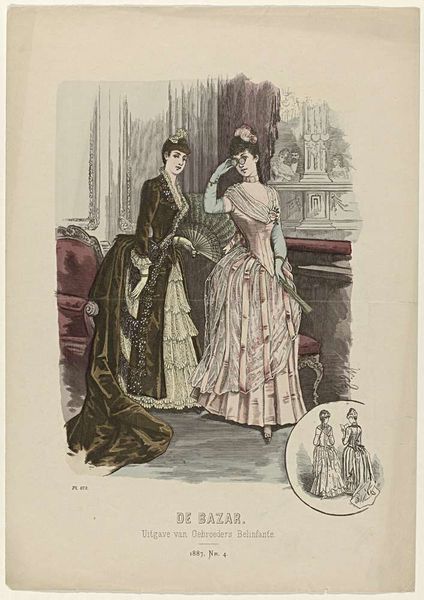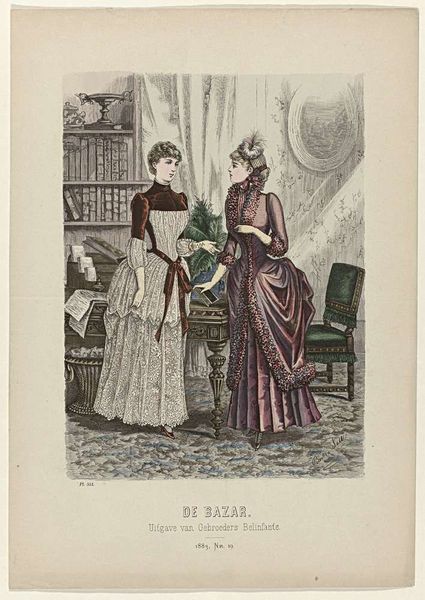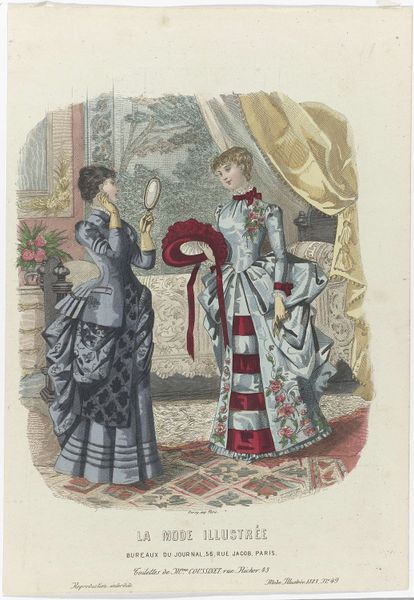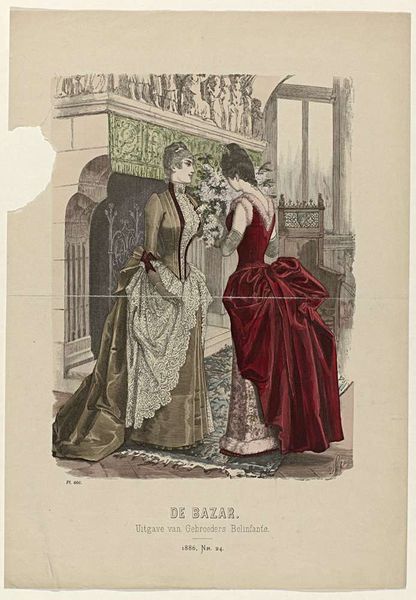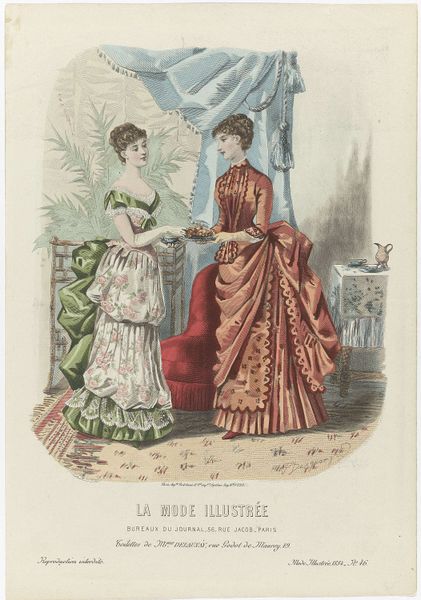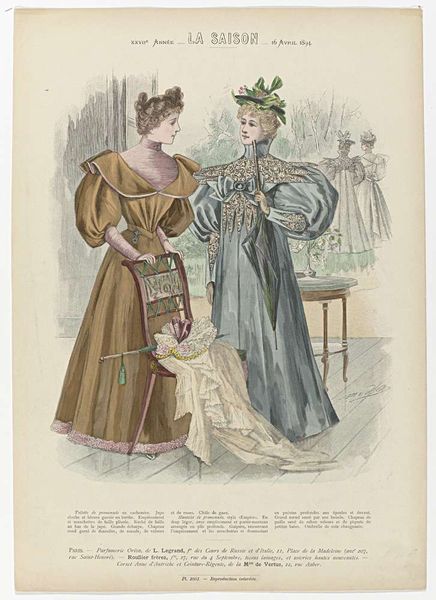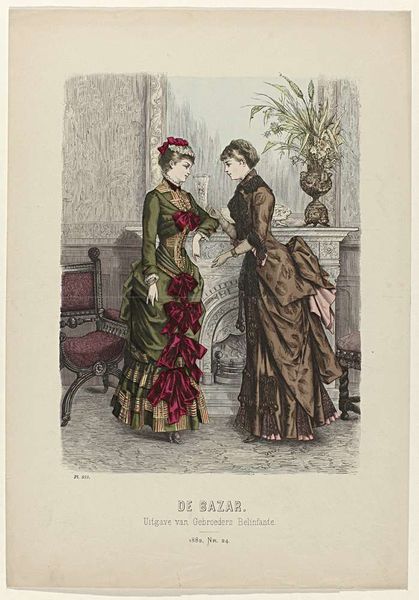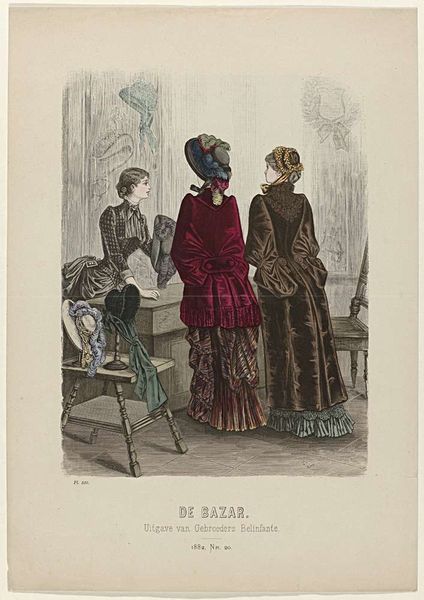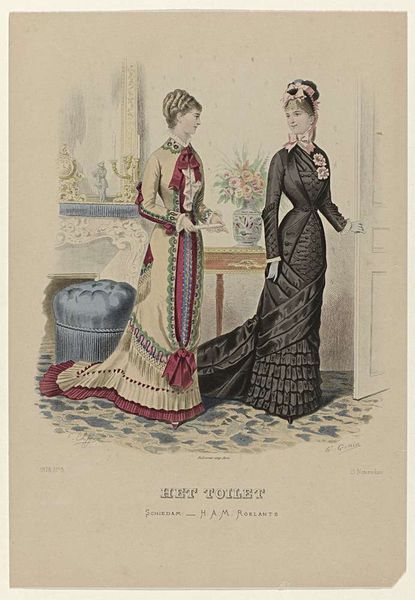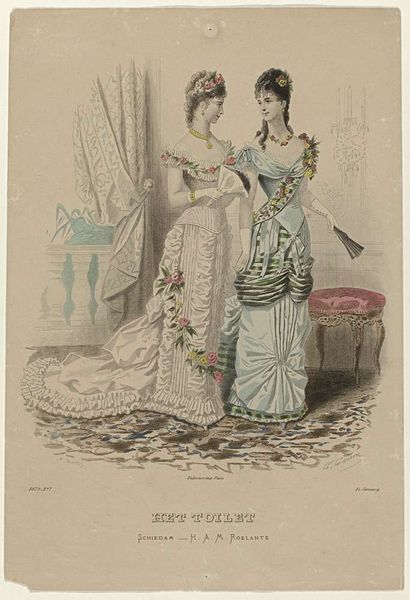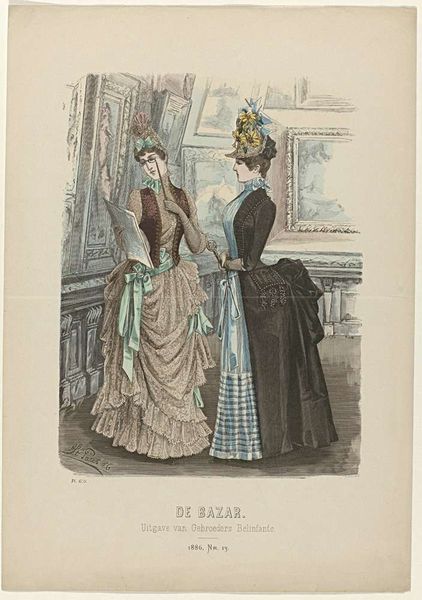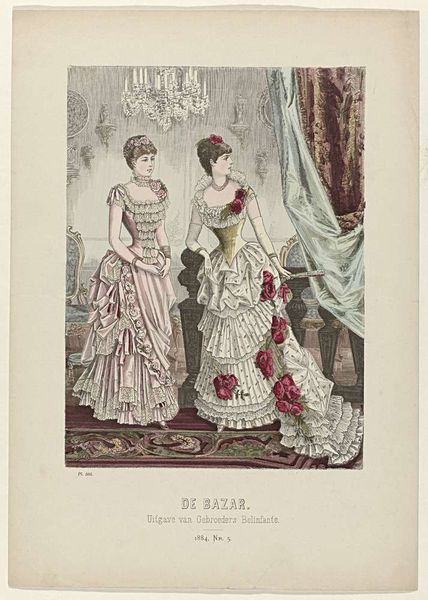
Dimensions: height 382 mm, width 270 mm
Copyright: Rijks Museum: Open Domain
Editor: This etching, “De Bazar, 1884, Nr. 13, Pl. 578,” dating from 1884, shows two women in elaborate dresses. It’s interesting to see this reproduced as a print—it feels almost like a commercial product. What strikes you about this piece? Curator: It's fascinating to consider this image through a materialist lens. The fact that it's a print, an etching reproduced for distribution, immediately directs us to the processes of production and consumption. We can look at how fashion and trends were disseminated to a broader audience. Consider the materials, ink on paper, and what they represent about access to imagery during this period. Editor: So, instead of seeing it just as a pretty picture, we can think about its function as part of a larger system of manufacturing and trade? Curator: Precisely! Think about the labor involved in creating the dresses, from the textile production to the intricate sewing, as well as the labour of the printmakers themselves. Where were these dresses sold? Who were they for? Understanding the social context surrounding its creation becomes critical. Was this artwork promoting particular commodities to specific social classes, dictating a sense of 'taste'? Editor: That’s a perspective I hadn’t considered. The flowers on the dress on the left suddenly seem less romantic and more like... manufactured details. Curator: Yes! And the print itself is a manufactured object. The 'originality' of the artistic expression is complicated. Where does art end, and commercial production begin? Does the reproductive process elevate it to fine art, or does it cement its status as mere fashion advertisement? Editor: So, it’s not just about what’s depicted, but also *how* it’s depicted, and *why*? It redefines the purpose of art from expressing just beauty into expressing power and reflecting commerce. Curator: Exactly. And by considering these elements, we disrupt the traditional hierarchy that separates “high art” from what might be deemed mere “craft” or advertisement. Thank you, it was interesting to explore that angle. Editor: This definitely changed how I will see images of fashion.
Comments
No comments
Be the first to comment and join the conversation on the ultimate creative platform.
